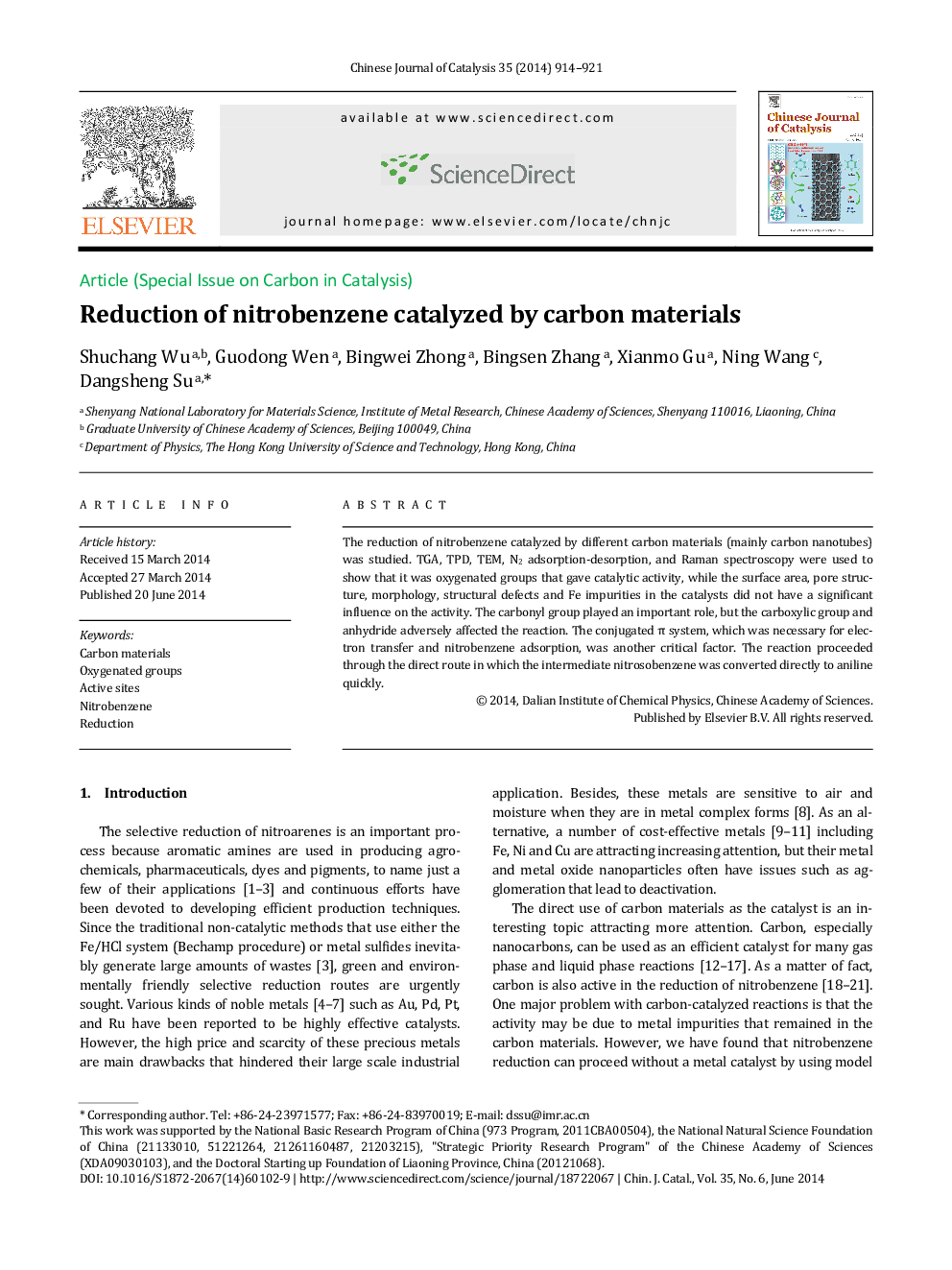| Article ID | Journal | Published Year | Pages | File Type |
|---|---|---|---|---|
| 59720 | Chinese Journal of Catalysis | 2014 | 8 Pages |
The reduction of nitrobenzene catalyzed by different carbon materials (mainly carbon nanotubes) was studied. TGA, TPD, TEM, N2 adsorption-desorption, and Raman spectroscopy were used to show that it was oxygenated groups that gave catalytic activity, while the surface area, pore structure, morphology, structural defects and Fe impurities in the catalysts did not have a significant influence on the activity. The carbonyl group played an important role, but the carboxylic group and anhydride adversely affected the reaction. The conjugated π system, which was necessary for electron transfer and nitrobenzene adsorption, was another critical factor. The reaction proceeded through the direct route in which the intermediate nitrosobenzene was converted directly to aniline quickly.
Graphical AbstractCarbon was an efficient catalyst for nitrobenzene reduction. The carbonyl group played an important role, while the carboxylic group and anhydride adversely affected the reaction.Figure optionsDownload full-size imageDownload as PowerPoint slide
